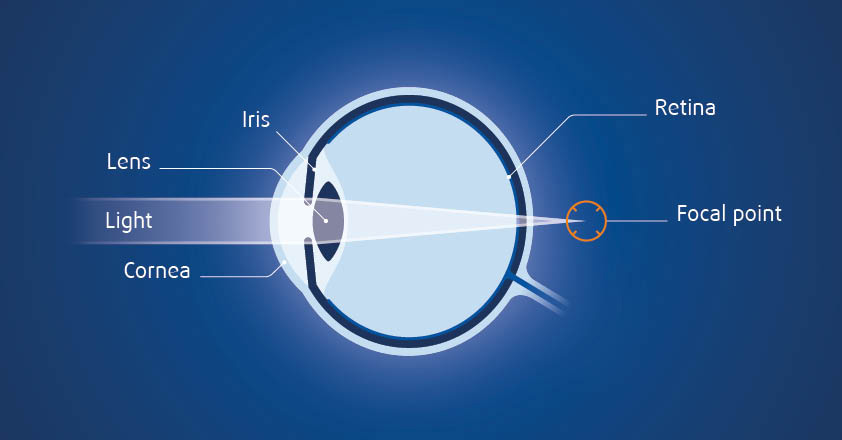Long-sightedness
How does long-sightedness occur?
With long-sightedness (hyperopia), distant objects appear in focus, but close objects appear blurred. This comes from the situation where light entering the eye does not come together directly onto the retina but just behind it, as the eyeball is too short. The shorter someone’s eyeball is, the more long-sighted they will be and the more close objects will appear out of focus for them.
The degree of long-sightedness is given in diopters with a plus sign. The higher the number, the greater the long-sightedness

How can long-sightedness be treated?
Operations to correct long-sightedness are possible in the area of the cornea (corneal or laser procedures) and the lens (lens procedures):
With laser procedures, tissue is removed from the cornea, to compensate for the length of the eyeball. This requires the cornea to have a certain thickness and stability.
With lens procedures an artificial lens is inserted to change the behavior of the refraction. Lens procedures enable very large sight defects to be corrected, as this is not limited by the amount of corneal tissue that needs to be removed.
Various treatment procedures may be considered, depending on the type of defective vision you have:
Which procedure is the right one for me?
Not every eye is the same. The condition of the eye and the type of short-sightedness will determine which procedures are appropriate.
The best thing for you to do is to give us a call and arrange an appointment.
Treatment methods for long-sightedness
FEMTO-LASIK
Long-sightedness
up to + 3 dpt.#
Astigmatism
up to 5.0 dpt.
#depending on the
thickness of the cornea
Long-sightedness
up to + 3 dpt.
Astigmatism
up to 5.0 dpt.
*For patients younger
than approx. 40 years of age
Any degree of long-sightedness in combination with presbyopia
Astigmatism
up to 5.0 dpt.
**For patients over approx. 40-45 years of age
Lens procedures enable very defective vision to be treated, as there are no strict limits in terms of the number of diopters. However, the individual structure of the eye and the age of the patient are key factors when selecting the treatment method.


